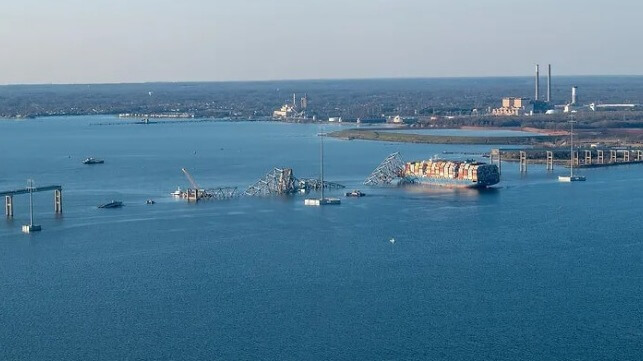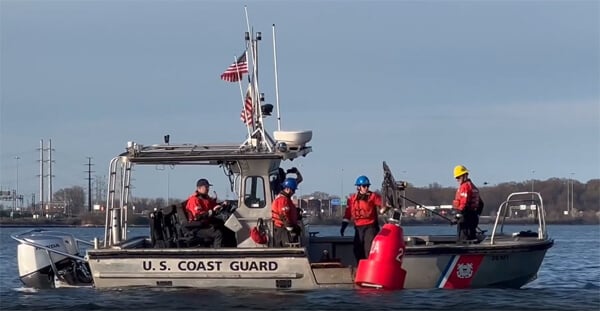Salvage Operation Focuses on Temporary Channels for Baltimore Harbor

The U.S. Coast Guard leading the Unified Command and the U.S. Army Corps of Engineers are focusing on the opening of temporary alternative channels as they respond to the bridge collapse in Baltimore. They outlined the phased approach highlighting that they expect to open three successively larger channels to begin to resume some ship movements in Baltimore Harbor.
The first of the three channels was opened during the day on Monday on the north side. Teams from the command were seen yesterday, March 31, placing the first buoys in the water around the debris from the Francis Scott Key Bridge. Officials noted that the opening of the channel today, April 1, is in place for smaller, essential vessels.
The first temporary channel, however, will just have a depth of 11 feet limiting the vessels that will be able to use it. It will have a 264-foot horizontal clearance and a vertical clearance of 96 feet. Officially are describing its use for response vessels and those participating in the salvage operation. Limited approval might also be given to commercial vessels such as tugs or barges. The first commercial vessel through the channel was a fuel barge used to supply jet fuel to the Department of Defense and was transiting to Dover Air Force Base.
“This will mark an important first step along the road to reopening the port of Baltimore,” said Capt. David O’Connell, Federal On-Scene Coordinator, Key Bridge Response 2024. “By opening this alternate route, we will support the flow of marine traffic into Baltimore.”

USCG teams began placing markers on Sunday for the first temporary channel (Unified Command)
Within a few days, they also expect to add a second channel Captain O’Connell described during an interview with CBS News. He said that some of the debris will have to be cleared first, but they would then add a channel to the south with an anticipated depth of 15 to 16 feet. He called it a start in the plans to restore vessel movement saying it should be able to accommodate additional smaller tugs. Clearance of the debris for this second channel is also underway.
The U.S. Army Corps of Engineers outlined the phases saying that they are focusing on clearing the federal channel. To achieve this, they are working on establishing a consolidation point for the wreckage. They will also focus on removing the roadway and bridge span on the bow of the Dali.
O’Connell told CBS News this would permit them to open a third channel with a depth of 20 to 25 feet. He said that was in the works saying it would permit “a lot more commercial vessels,” to resume sailing into and out of Baltimore harbor.
The Army Corps said they were also focusing on objectives to stabilize the Dali and analyze the internal bridge truss structure. On Sunday, in addition to the cutting teams working on the north side of the collapsed bridge truss, three dive teams were surveying sections of the bridge and the Dali. The Army Corps wants to prevent the ship from pivoting and then prepare for the removal first of the bridge structure and then damaged or destabilized containers as necessary.
As the work progresses, they said they would position assets for repositioning and then refloating the Dali. In the second phase, they look to remove the ship before the final phase which will complete clearing all the wreckage.
